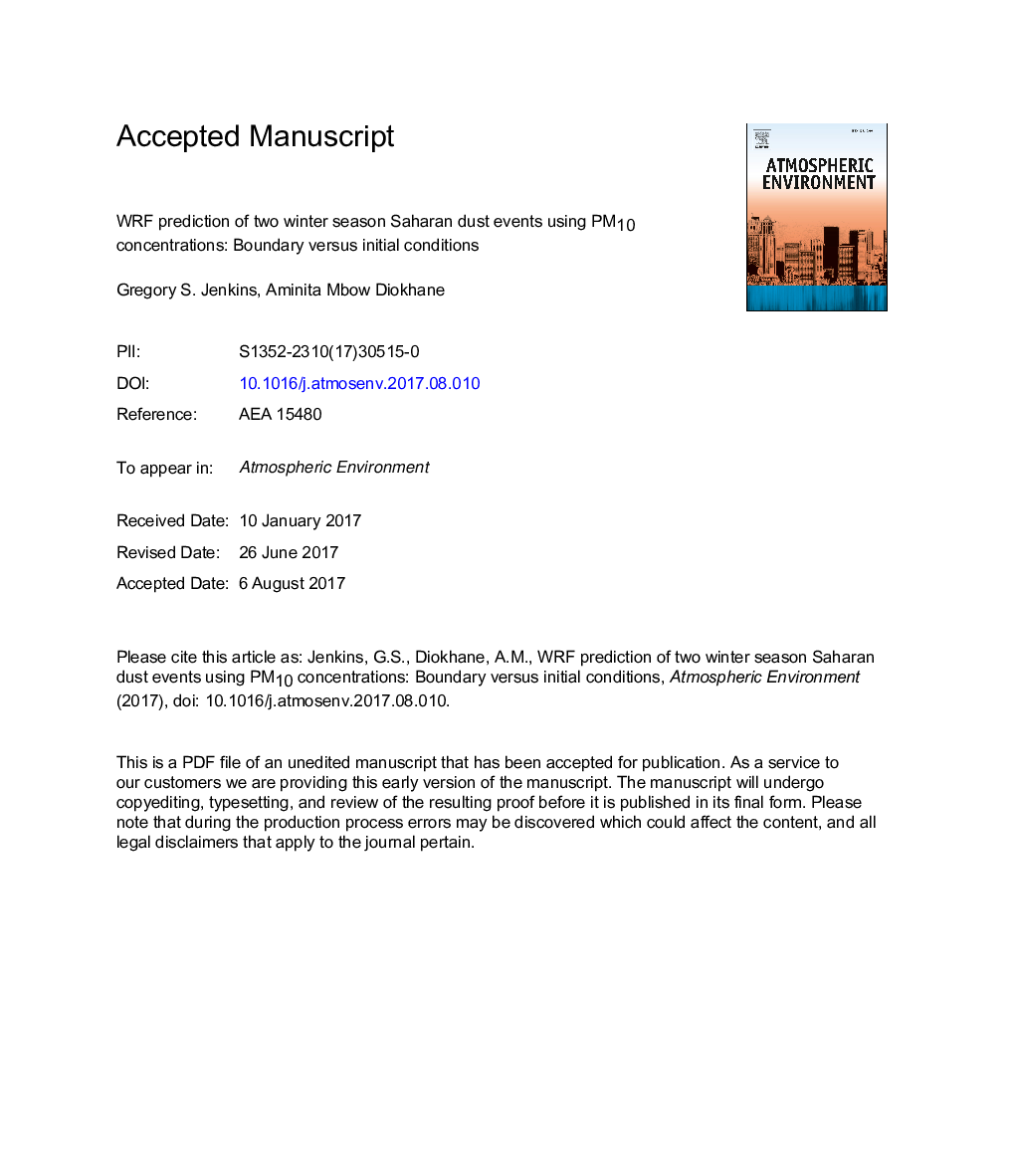| Article ID | Journal | Published Year | Pages | File Type |
|---|---|---|---|---|
| 5753057 | Atmospheric Environment | 2017 | 35 Pages |
Abstract
During the northern hemisphere winter and spring seasons Saharan dust events overspreading West Africa are frequent and linked to mid-latitude interactions. The dust events have the ability to produce low visibilities, poor air quality and can promote respiratory disease. While a number of case studies have been undertaken, the ability to forecast Saharan dust events is largely unknown. To investigate this matter, we have performed hindcasts using the weather research and forecasting (WRF) model with the Goddard Chemistry Aerosols Radiation Transport (GOCART) module, with 6-h boundary conditions from the NOAA ' National Center for Environmental Prediction (NCEP) final analysis (FNL). We use observed and forecasted PM10 concentrations to evaluate the hindcasts. The hindcasts begin with different conditions 3-8 days before two Saharan dust events where the maximum Particulate matter at 10 microns (PM10) concentrations are observed on 20 January and 7 February 2012 in Dakar, Senegal. The results show that all hindcasts are able to capture the timing of the peak on 20 January but the maximum peak during the second dust event occurs one day prior to the observed peak on 7 February with similar pattern from satellite based aerosol optical depth (AOD) estimates. The hindcasts have positive biases in PM10 concentrations relative to the observations in Dakar Senegal. The hindcasts suggest that WRF model has the potential to effectively forecasts Saharan dust events in real-time forecasts, however, they must be evaluated against additional surface PM10 observations at varying locations, which are currently sparse over West Africa.
Related Topics
Physical Sciences and Engineering
Earth and Planetary Sciences
Atmospheric Science
Authors
Gregory S. Jenkins, Aminita Mbow Diokhane,
